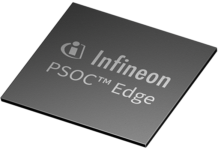SANTA CLARA, California, July 10, 2019 – The rising density of electronics-based products due to the emergence of concepts such as digitalization, smart homes, and connected devices for IoT is intensifying the demand for electromagnetic compatibility (EMC) test equipment and testing services. The need to check the products for unintentional electromagnetic interference (EMI) is expected to drive the $2.75 billion market toward $4.57 billion in 2022 at a compound annual growth rate of 10.7 percent. The market will continue to be led by testing services, which contributed $1.9 billion in 2017 and is expected to reach $3.21 billion in 2022, while the test equipment segment generated $850.0 million in 2017 and is likely to touch $1.36 billionin 2022.
“The ongoing transition to full-electric vehicles (EVs) and the constantly evolving regulations and guidelines regarding designing and manufacturing are prompting manufacturers and testing service companies to perform EMC tests,” said Frost & Sullivan’s Measurement & Instrumentation Team. “One of the biggest end users was the IT & Communications industry, which generated $494.0 million in 2017, while third-party testing accounted for almost 50 percent of test equipment revenue at $425.0 million.”
Frost & Sullivan’s recent analysis, Global Electromagnetic Compatibility Test Equipment and Testing Services Market, Forecast to 2022, covers the segments of testing services and equipment in the regions of North America, Europe, Asia-Pacific, and Rest-of-the-World (RoW). It presents the key dynamics that influence market growth and identifies end-user segments and regions that are poised for high growth. It also discusses the notable regulations and directives that will have a strong impact on the market in the next five years.
“With the EMC test equipment market constantly adapting to a changing regulatory landscape, test equipment manufacturers have begun to adopt technological solutions that allow them to test different standards,” noted Frost & Sullivan. “There has also been a noticeable shift towards consolidation to help testing services providers position themselves as one-stop shops. This is a particularly relevant trend as industry convergence is resulting in a high number of integrated technologies that have to be tested for compliance with standards other than those governing EMC.”
To optimally tap the growth opportunities in the market, testing equipment vendors and service providers need to:
- Upgrade test equipment such as amplifiers and spectrum analyzers to prepare them for 5G testing.
- Offer component-level compliance testing of batteries, electronic control units, and controllers.
- Develop next-generation, high-power EMC testing equipment.
- Expand their capacity and capability across regions, as Industry 4.0 will bring global growth opportunities.
- Establish processes that will aid in upgrading their equipment and testing methodologies in line with the latest regulations and standards.
- Foster close relationships with automotive OEMs to increase the penetration of EMC test solutions.
For further information on this analysis, visit: http://frost.ly/3j5















